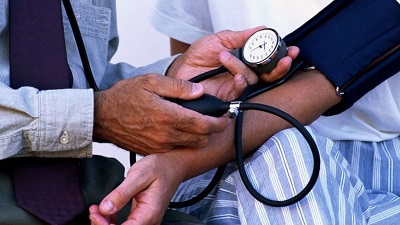
I got several feedbacks to the piece on Disposal of Unused/Unwanted Medicines Programme (DUMP). An enquirer said, I do not know whether you take medicines everyday yourself. It is not easy taking medicines every day. Another said that I have had hypertension for 10 years and diabetes for 5 years. I have skipped medications at times but I am still alive. In our first analysis of returned medicines, anti hypertensives topped the list of medicines returned followed by antibiotics.
The fact is that controlling hypertension reduces the risk of stroke, coronary artery disease (CAD), congestive heart failure (CHF), end-stage renal disease, peripheral vascular disease, as well as overall mortality. The risk of developing these hypertension related complications is continuous starting at a blood pressure level as low as 115/75mmHg. Hypertension is an independent risk factor for myocardial infarction, chronic kidney disease, ischaemic and haemorrhagic stroke, heart failure and premature death.
The SPRINT trial showed that intensive BP control to systolic blood pressure (SBP) to less than120 mm Hg results in significant cardiovascular benefit in high-risk patients with hypertension compared with routine BP control to less than140 mm Hg. The SPRINT is an acronym for the Systolic Blood Pressure Intervention Trial. The goal of the trial was to compare the safety and efficacy of intensive lowering of systolic blood pressure (SBP) to <120 mm Hg versus routine management to <140 mm Hg.
Patients were randomized to intensive SBP lowering (target <120 mm Hg) or routine SBP management (target <140 mm Hg). Total number of enrollees was 9,361. Duration of follow-up: 5 years (median 3.26 years). The inclusion criteria were for persons aged greater or equal to (≥) 50 years; with hypertension with systolic blood pressure (SBP) ≥130 mm Hg; at least one risk factor for heart disease; presence of clinical or subclinical cardiovascular disease other than stroke; Chronic kidney disease, defined as estimated glomerular filtration rate (eGFR) 20-59 ml/min/1.73 m2or mild to moderate renal impairment; estimated cardiovascular disease (CVD) 10 year risk of ≥15%.
The trial was terminated early due to overwhelming evidence of benefit. The primary outcome, myocardial infarction (MI), acute coronary syndrome (ACS), stroke, congestive heart failure (CHF), or cardiovascular (CV) death, was significantly lowered in the intensive BP management arm compared with the routine management arm.
During follow-up, the mean SBP was 121.5 mm Hg in the intensive treatment group and 134.6 mm Hg in the standard treatment group. Although many classes of medications were available, emphasis was placed on using classes with the best outcomes in large clinical trials: thiazide-type diuretics, calcium channels blockers, and angiotensin-converting enzyme inhibitors or angiotensin receptor blockers. Other agents, including spironolactone, amiloride, β-blockers, vasodilators, or α-receptor blockers, could be added if necessary. The mean numbers of antihypertensive medications were 2.8 and 1.8 in the intensive treatment and standard treatment groups, respectively.
On balance, the intensive intervention was well tolerated. The trial was designed to identify serious adverse effects expected to be related to more intensive treatment of hypertension. The SPRINT protocol prespecified conditions of interest, including orthostatic hypotension, syncope, bradycardia, electrolyte abnormalities, injurious falls, and acute kidney injury or failure. Orthostatic hypotension, defined as a drop in SBP of ≥20 mm Hg or drop in diastolic BP of ≥10 mm Hg 1 minute after standing, was significantly more common in the standard than in the intensive arm
The results of this landmark trial indicate that intensive BP lowering to a target <120 mm Hg is superior to routine management with a target of <140 mm Hg in high-risk non-diabetic patients with hypertension, including in elderly patients. There were also reductions noted incardiovascular events and all-cause mortality, accompanied by a reduction in CHF. An intensive strategy also reduced the risk of developing left ventricular hypertrophy (LVH) among patients without baseline LVH and resulted in greater LVH regression among those with evidence of baseline LVH.An intensive strategy carried a higher risk of hypotension, syncope, and accelerated reductions in GFR (only in patients without CKD at baseline).
This is a landmark trial and is likely to result in a paradigm shift in the management of patients with hypertension.The trial design is also interesting because it suggests that hypertension treatment should be individualized based on underlying risk of CV outcomes rather than based on absolute values alone with wide public health importance.
In a commentary a reviewer noted that no matter who are chosen for application of the SPRINT intensive BP-lowering treatment strategy, it is important to be mindful of the manner in which BP was measured in the trial: an average of 3 office BP readings taken with proper cuff size, participants seated with their back supported, 5 minutes of rest before measurement, and no conversation during the rest period or BP determination.
There is study conducted in Ghanaby Olutobi et al titled Hypertension prevalence, awareness, treatment and control in Ghanaian population: Evidence from the Ghana demographic and health survey. PLUSONE https://dpi.org/w;1371/journal;Nov 7, 2018. The authors noted that due to the increase in the burden of hypertension in Ghana and the visible impact on CVD, the Government of Ghana (GOG) through the joint effort of the Ghana Statistical Service (GSS), the Ghana Health Service (GHS) and the National Public Health Reference Laboratory (NPHRL) decided to collect specialized data on blood pressure in the 2014 Ghana Demographic and Health Survey (GDHS).
The study examined the prevalence, awareness, treatment and control of hypertension among Ghanaians aged 15-49 years. The study covered a total of 13, 247 respondents. The overall prevalence of hypertension was 13% (males 12.1%, females 13.4%). 45.6% were aware of their hypertension status. 40.5% were treating the condition. Only 23.8% had blood pressure controlled.
There is no doubt at all about the need for more and regular public education and awareness about hypertension. I personally see another clear need for the increased consumption of polyphenol-rich cocoa as part of the drive to curb the high burden of hypertension in the country.
DR. EDWARD O. AMPORFUL
CHIEF PHARMACIST
COCOA CLINIC




